Are you struggling to sell more because you have to rely on poor CRM (Customer Relationship Management) data? Wondering if a CRM survey could help uncover the customer insights you miss?
Fact: 72% of companies question the accuracy of their customer information. For many, up to 91% of that data is incomplete. And 70% of it becomes useless within a year.
Let's see how this type of survey can help you out.
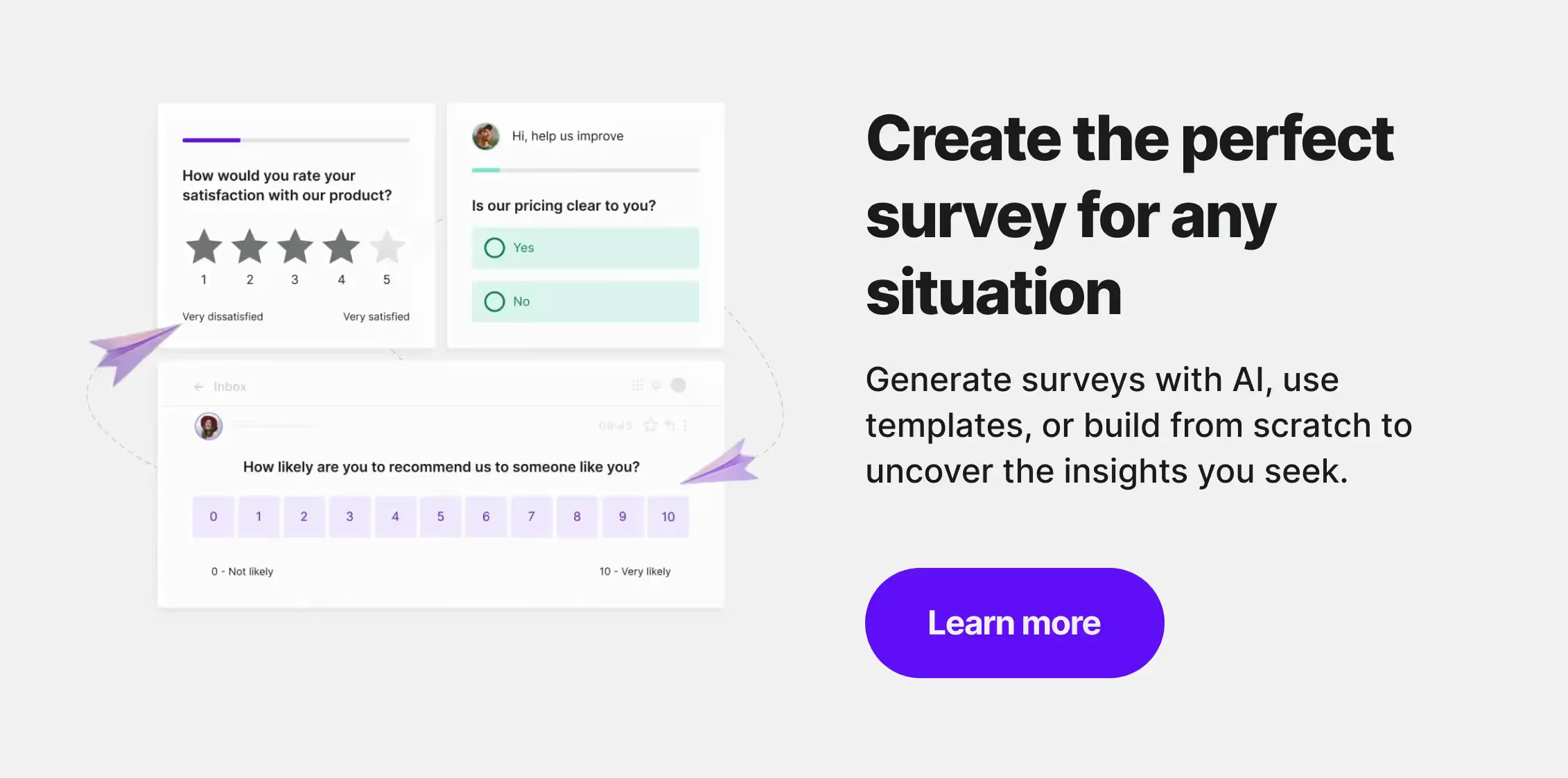
What is a CRM Survey?
A CRM survey is a poll, or another form of a survey, sent to contacts within a company’s customer relationship management system.
The purpose of surveying CRM data is to update, refresh, and – eventually – enrich the existing customer information with insights that could help to serve the target audience better.
How do CRM surveys differ from other customer polls?
CRM surveys focus on researching leads and customers only. They aim to assess customer experience to:
- Improve business decisions
- Identify areas to improve
- Discover new opportunities to grow, and more
In this article, you’ll learn how to conduct surveys in CRM to:
- Increase the accuracy of your current customer data
- Use this insight to attract more qualified leads
- Make better business decisions and more
The Pros and Cons of Surveys in CRM
Pros:
#1. Improve the CRM data
CRM insights can help a company confirm and expand data about its customers. Such insights may also help uncover new ways to segment customers better.

#2. Help strengthen customer relationships
A good CRM survey can uncover factors that engage customers with a brand more.
#3. Boost sales effectiveness
For a sales team, a CRM survey can help overcome their biggest customer data issues. For example, identifying contacts with the biggest potential or finding cross-selling opportunities.
#4. Help analyze customer satisfaction levels across the entire lifecycle
Finally, CRM survey helps discover what drives customers in their buying journey. And with such insight, identify your company’s strengths and weaknesses at each customer touchpoint.
Cons:
#1. Depending on your questions, the survey may deliver irrelevant or incorrect data
Asking confusing questions, will, most likely, yield poor results. So would structuring questions to suggest an answer. Or setting up the survey without a clear goal.
#2. Badly formatted surveys can put customers off
Similarly, the format of the survey email will affect the response rate. A confusing layout might deter your contacts from answering the survey. More complex survey elements – dropdowns, text areas, etc. – won’t even render well in an email client, preventing someone from responding too.
How to Use CRM Surveys: Survey Ideas to Help You Update and Enrich Your Data
Survey #1. Measuring satisfaction across the customer lifecycle
Delivering exceptional customer experience is the best growth strategy by far.
But first must understand your strengths and weaknesses across the entire customer lifecycle first.
That’s what this CRM survey helps uncover. To begin, segment your CRM data by various customer lifecycle stages. Then, survey each section to assess your performance.
Here are some lifecycle stages to survey:
1. Sales interactions
Goal: To discover which elements of your sales process engage leads the most.
Background: Customers have various expectations for your sales process.And their experience will affect their buying decision and loyalty too. One example: 74% of people are likely to switch brands if they find the purchasing process too difficult.
Recommended questions:
- “ In terms of simplicity, how do you evaluate the purchase process? Choose from 1-10. ”
- “ What one thing, if any, can we do better to facilitate the purchase process? ”
2. Post-purchase experiences
Goal: To fix user friction in your checkout process and boost retention.
Background: The moment a customer decides to buy from you is a crucial journey touchpoint. Run a post-purchase survey to collect feedback on the strongest and weakest points in your purchase process to refine it and increase the number of cross-sells, up-sells, and recurring clients.
Recommended questions:
- “How would you rate the checkout experience?"
- "How satisfied you are with the speed of delivery?"
3. Training/Onboarding
Goal: To discover whether you’re providing enough training to ensure success with your product.
Background: But both training and onboarding are complex but necessary processes. If done poorly, each could leave a customer with insufficient information to succeed.
Recommended questions:
- “ Is there anything you believe should be done differently during training/onboarding with our product/service? ”
4. Support/customer care interactions
Goal: To investigate how well your support matches customers’ needs.
Background: Even a single customer support mistake can cost a company dearly. In fact, according to a survey by American Express, 33% of Americans would consider switching companies after just a single instance of poor service.
Assessing the quality of your support interactions will help identify shortcomings in your support processes.
Recommended questions:
- “ How do you rate your overall satisfaction with our support team? Please choose from 1-5. ”
- “ What area of our product/service, if any, would you like more assistance with/more information on? ”
5. Upcoming renewals
Goal: To gauge the likelihood of a person to continue doing business with you.
Background: Customer churn is a concern for any subscription-based business. And so is trying to predict the likelihood of upcoming renewals.
The solution – survey upcoming renewals as they come close to their renewal date. By doing so, you’ll identify potential churn but also, work out a plan to retain a customer.
Recommended questions:
- “ How likely is it that you would recommend our product/service to a friend or colleague? ” (depending on the answer, this inquiry could be supplemented by a follow-up question: “ What is the reason for your answer? ”).
Make sure to take a look at our NPS guide.
6. Recent cancellation
Goal: To uncover the reasons why customers cancel your service.
Background: Customers leave for a wide range of reasons. Some of these reasons relate to their experiences with you. Others, to a customer’s personal or professional situation, for example.
Knowing the reasons for canceling your service will help you improve your offering and increase retention.
Recommended questions:
- “ What prompted you to cancel your plan? ”
- “ What improvements would make you consider renewing your subscription? ”
7. Dead sales leads
Goal: To identify how to re-engage lost leads.
Background: Many leads disappear during the sales process. In spite of their interest in your services or products, the contact with them dropped. However, their disappearance doesn’t mean a lost sales opportunity.
Factors like wrong timing or changes in the business might have made them go dark.
This survey might help:
- Uncover the reason for their disappearance
- Re-engage them with your brand
- Restart the sales process
Recommended question:
- “ What's stopping you from purchasing the product/service from us? ”
Survey #2. Profiling leads and customers
The more you know about your leads, the greater your chance for more sales, retention, and revenue.
But, as we’ve pointed out earlier, most companies question their data accuracy. In fact, for many, it is incomplete. Running surveys to improve customer profiles would help you in many ways:
- You will discover your target customers’ pain points and needs better
- Identify the most effective channels to engage them
- Establish customer segments to understand them even better
- Keep contact information fresh, and
- Provide new means to segment the data
Recommended questions:
- “ How often do you use our product/service? ”
- “ Which of the following best describes your business? (Choose all that apply) ”
- “ Which of the following tools do you use in your day-to-day business communication? ”
Survey #3: Analyzing product usage
Goal: To discover insights to drive new product ideas and innovation.
Background: Innovation drives much of today’s buying decisions.
According to a study by Lab42, 84% of customers choose brands they consider innovative.
And a study by the Nielsen Group named innovation as one of the main drivers behind product purchases.
But innovation works only when it delivers on customers’ needs. And the best way to discover what your customers want from your product next is by surveying them.
Recommended questions:
- “ What's the primary benefit you receive thanks to our service/product? ”
- “ In terms of ease of use, which area – if any – can we improve in? ”
Survey #4. Measuring customer satisfaction and loyalty
Goal: To assess customer satisfaction levels to drive revenue growth.
Background: Today’s customers value referrals more than any other form of advertising. And for many, the search for a new solution begins by asking others for advice.
Recommended questions:
- Discover your current customer loyalty levels
- Identify your promoters and their reasons for being eager to promote you
- Identify detractors and the reasons for their dissatisfaction
Recommended solution: NPS survey - the most effective method to measure customer loyalty.
CRM Survey Questions For Customers
Questions you ask your CRM contacts will directly affect the outcome of your study.
That’s why, in this section, we outline 4 types of questions to use and when.
#1. Categorical questions
Categorical question help uncover a more general idea about your customers. For example, how many of them came through a particular channel. Or how many found your sales process lengthy, and so on.In their simplest form, categorical questions require only a yes or no answer, i.e., “ Are you a business owner ” However, you could also offer multiple choice-based answers, i.e., “ How did you hear about us? Web/Google/Referral, etc. ”
#2. Ordinal questions
Ordinal questions reveal patterns by asking to choose from a clear order of information. For example, “ What’s your annual revenue? Less than $1M/$1M-$5M/$5M+. ”In CRM surveys, ordinal questions often help identify new customer segments.
#3. Interval questions
This survey question uses scales to discover customer tendencies towards something. For example, in an NPS CRM survey, you ask customers what’s their likelihood to recommend you on a scale of 0-10.
#4. Open-ended questions
Finally, to discover customers' experiences, stories or expectations, use open-ended questions. Unlike the previous three types, these questions do not offer a choice of answers. Instead, they encourage them to share insights based on experiences or feelings towards the subject of a question.
Example:“ What do you think of our sales process? ”
Read more about open-ended questions here.
How to Send CRM Surveys
The final element of any CRM survey is getting it to the target audience. And here are the two ways you could use:
#1. Add surveys to emails sent from the CRM
Most CRMs offer the ability to email contacts directly. Salesforce, for example, allows Salesforce surveys to be sent from the platform.
Another approach - email CRM contacts a link to the questionnaire you’d like them to complete.
TIP: Include only the first question – ideally a single choice answer - in the email. And then, setting it to go to the rest of the survey once a person selects their answer. By doing so, you can increase the response rate, regardless of the length of your survey.
#2. Triggered, automated emails
Some survey types aim to analyze specific customer interactions. Customer support, for example. And you could set them up to trigger automatically after a person’s CRM status changes.
We highly recommend taking a look at the Email Survey - Complete Guide.
Survicate: your survey tool for CRM
You already know that surveying CRM data helps increase its accuracy. You’ve learned how it speeds up the sales processes too. And how the two combined help propel your business growth so much forward.
But there’s a catch...You see, to achieve it all, you must use a good survey tool for collecting and acting on customer insights. One that would integrate with your CRM, ensure high open and response rates, and allow you to improve data quality once and for all.
With Survicate, you can achieve all of the above with ease. Simply sign up for our 10-day free trial to get access to all Business plan features and start collecting invaluable customer insights today.

.avif)







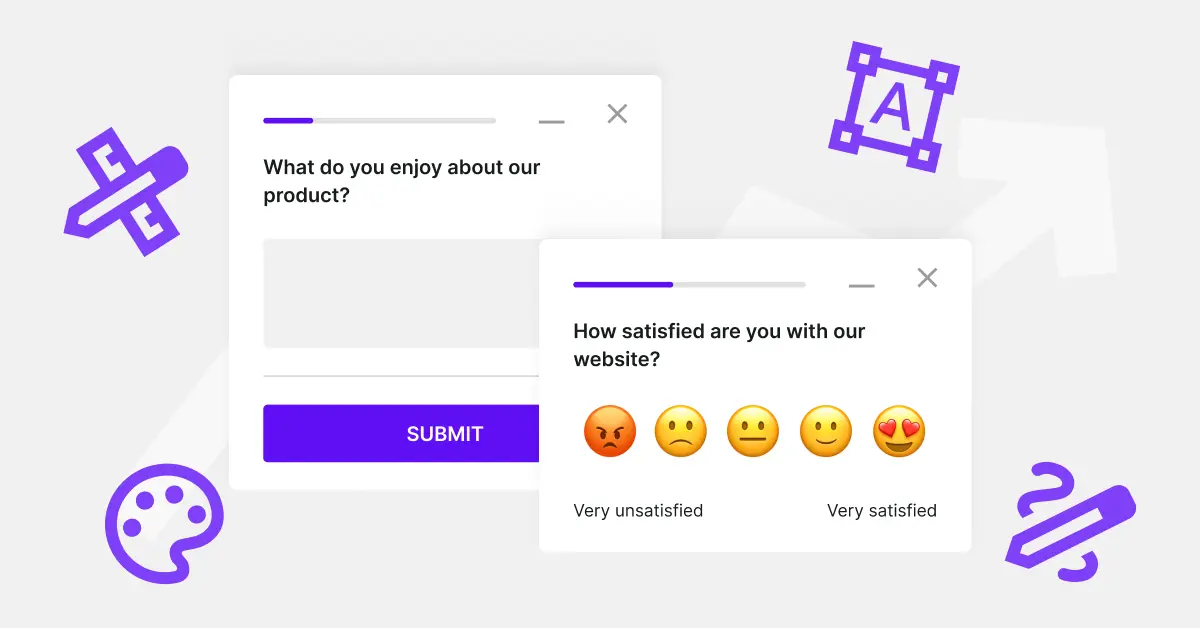
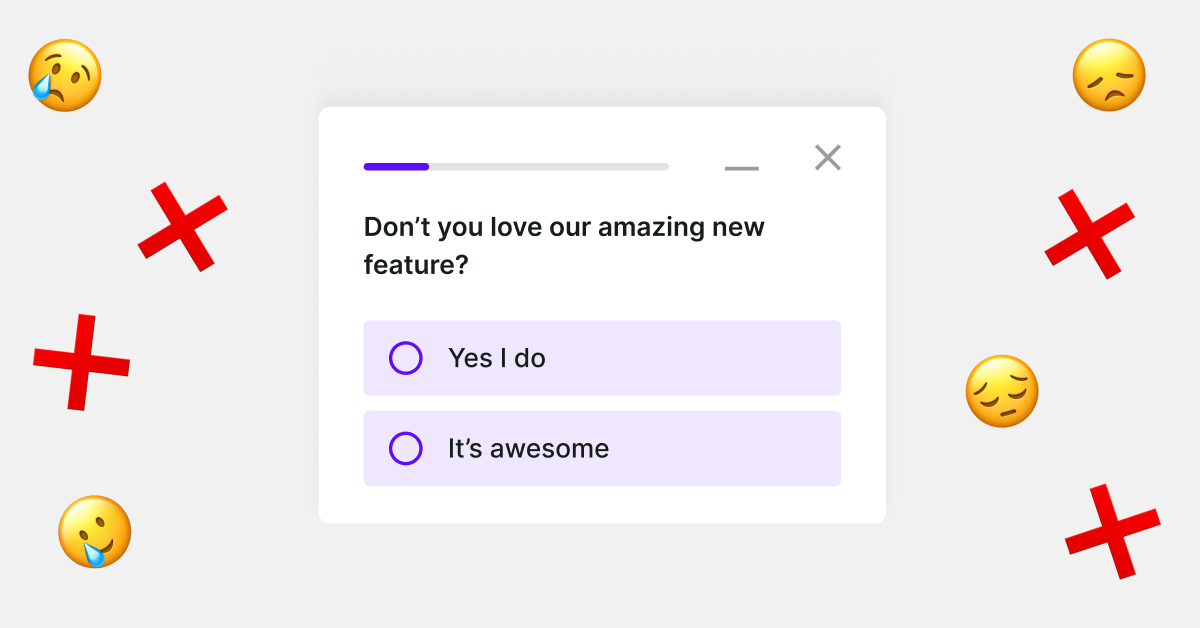
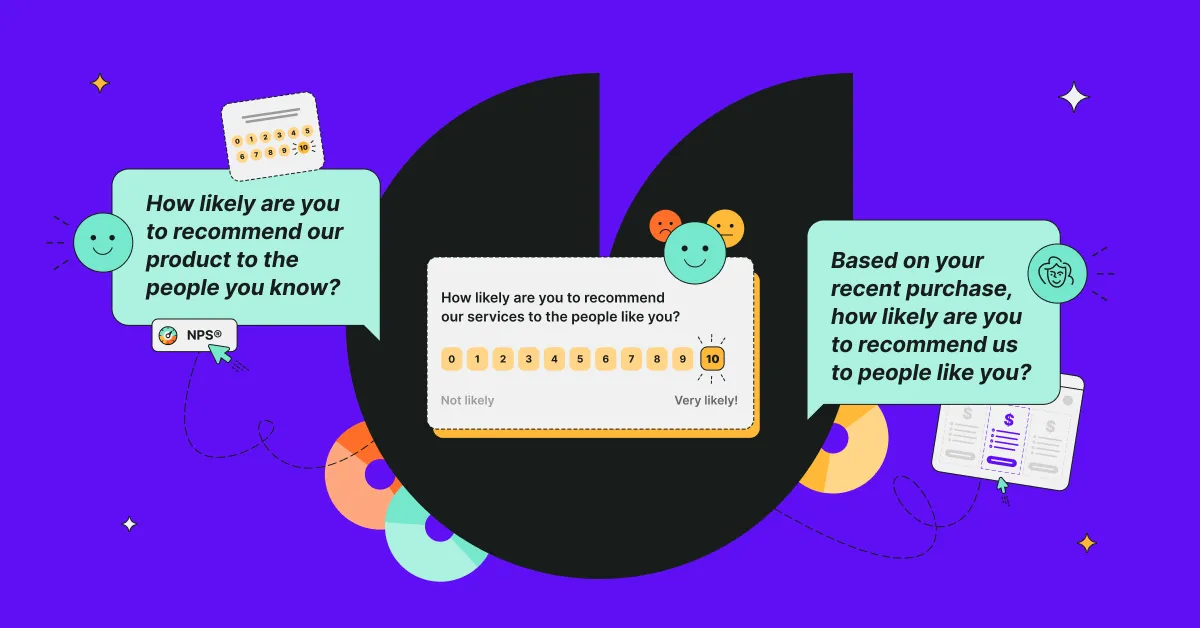
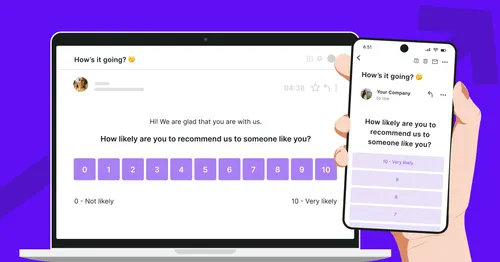
.svg)

.svg)



